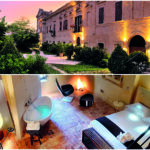Visual defects (nearsightedness, astigmatism and farsightedness) are becoming increasingly common, and refractive surgery now offers several cutting-edge techniques (excimer laser and femtosecond laser) to eliminate them definitively in a completely safe and painless manner. “Beyond the age of 40, however, when the patient’s defect exceeds the corrective possibilities of the laser, one must necessarily resort to intraocular refractive surgery with implantation of artificial lenses,” Dr. Domenico Berardi, a well-known ophthalmic surgeon from Parma, highly specialised in surgery of the anterior segment of the eye and one of the leading experts in Italy in the field of refractive surgery, asserts in this long interview.
by Roberta Imbimbo
Dr Berardi, how are visual defects corrected today?
Thanks to the continuous technological progress of instrumentation and operating techniques, today there are various types of surgery, all highly effective, for the treatment of visual defects: the choice of interventional method is obviously left to the specialist depending on the age of the patient and the type of defect. Generally, laser treatments can eliminate all refractive defects from the age of 24 and upwards. Several methods are available today (PRK, LASIK, SMILE), all of which are rapid, precise, safe and painless and allow for a very short post-op period (the patient generally returns to normal 24 hours after the operation).
What options does the surgeon have when laser is not possible?
Today, it is possible to use phakic intraocular lenses, also known as phakic IOLs (ICLs), which are lenses made of a biocompatible and flexible material called Collamer that are inserted into the eye while keeping the crystalline lens intact, in order to allow proper refraction.
These lenses are individually designed for each person, especially for the correction of high myopia and refractive defects. Once inserted, the lens remains in place permanently. The procedure is absolutely painless and the results are truly extraordinary! Over 40 years of age, when the presbyopia defect is added and thus the corrective possibilities of the excimer laser are exceeded, intraocular refractive surgery with implantation of high-tech multifocal artificial Intra Ocular Lens (IOL) is necessary to restore the refractive power of a natural lens.
You are one of Italy’s leading experts in Facorefractive surgery, which you have been practising for over 30 years. Can you tell us about it?
Phorefractive surgery involves replacing the natural crystalline lens, albeit still transparent, with an intraocular lens (artificial lens) of adequate power. This surgical technique, which is in fact the same as that used for cataract surgery, involves micro-incisions in the eye through which an ultrasound probe can be inserted that fragments the crystalline lens, thus allowing it to be removed. Through the same incision, an intraocular lens is then inserted to replace the natural crystalline lens. The operation, which can solve both the refractive problem and that of a possible cataract in a single surgical act, is absolutely painless and has no side effects (the intraocular lens causes neither allergy nor rejection and requires no special care). Recovery times are very short and the patient is able to return to work and drive the day after surgery.






















































